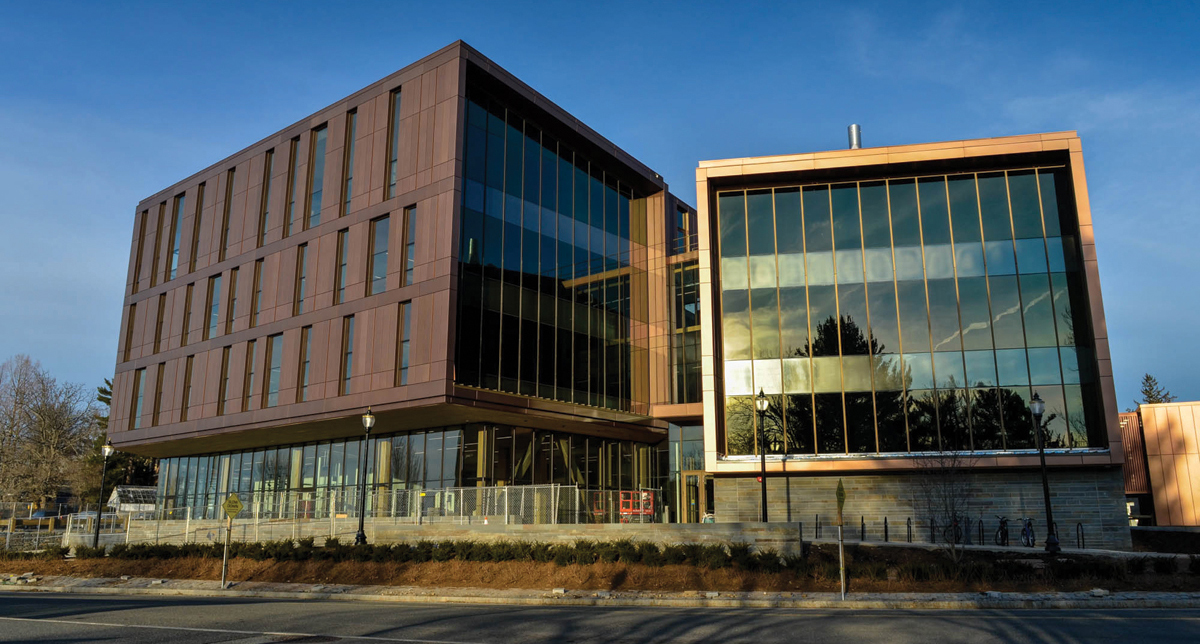A new report from the Intergovernmental Panel on Climate Change details the serious threat posed by climate change, but underplays the impact healthy forests and the sustainable timber they produce can have in helping to solve the climate crisis.
Writing by Frank Lowenstein, Deputy Director and Chief Conservation Officer
After the torrential thunderstorm had soaked through our rain jackets and the grape-sized hail had piled around our feet, my son Max and I resumed climbing toward the Continental Divide—here some 9,000 feet above sea level. We were looking forward to dropping into a verdant valley to camp for the night and enjoy a bit of father-son togetherness, but as I crested the ridge, I discovered our plans would have to change.
The trees were blackened skeletons, and the ground beneath them had no vegetation, no thick layer of pine needles. An intense wildfire some months before had burned it all away, and the thunderstorm had turned the denuded land to mud. We finally found a workable campsite in this eerie landscape, but slept uneasily, repeatedly woken by the rattle of small gravel avalanches.
Our experience in Utah may foreshadow what we will all face in coming years. On Monday, Oct. 8, the prestigious Intergovernmental Panel on Climate Change issued its latest report on the science of climate change, making it clear that what we truly face together is not just climate change, but climate disruption. The report details how climate change has likely already worsened some extreme events, including thunderstorms and wildfires like those Max and I encountered, and how in the future it will bring worsening storms, rising seas, progressively increasing economic damage, and more. Many of us will have a tougher time finding safety and comfort for our families as conditions worsen.
The report is a clarion call for drastic action to minimize the extent of climate change, and this is where forests enter the picture. The report details the important role of forests in keeping warming in check, and calls for both forest restoration and replanting on a massive scale, along with increased use of bioenergy with carbon capture and storage.
Many of New England Forestry Foundation’s close partners, including Harvard Forest director David Foster and Woods Hole Research Center senior scientist Richard Houghton, joined other forest scientists in signing a response letter to the report that points out that many of the technological carbon-capture solutions highlighted in the IPCC report are unproven, while forest sequestration predates the human race.
As the letter explains, “the ‘natural technology’ of forests is currently the only proven means of removing and storing atmospheric CO2 at a scale that can meaningfully contribute to achieving carbon balance.” The letter also suggests “increased use of sustainably produced wood in longer-lived products, such as buildings, where timber can store carbon and substitute energy-intensive materials like concrete and steel.” NEFF’s Build It With Wood program aims to foster more use of sustainable timber in taller buildings, while our Exemplary Forestry Initiative aims to improve the quality of forestry and its climate benefits.
The potential of these two angles to help solve the climate crisis is vastly underplayed in the IPCC report. The report points to the need to improve the energy profile of buildings, but only focuses on operational energy like heating and lighting, and not the energy required to build them. It calls for carbon capture and storage technologies to be perfected so we can keep making concrete and steel—materials with production processes that emit significant amounts of greenhouse gases—but ignores the potential to replace them with new renewable products like cross-laminated timber (CLT). It also calls for forests to be maintained, and indeed restored, but focuses little time and attention on how the forests are to be managed to promote a stable climate.

The UMass Amherst Design Building is made with sustainable wood products that are engineered to be as strong as steel and concrete. Alex Schreyer / UMass Amherst
The IPCC report represents a watershed moment, a recognition that human-caused climate change is about to deliver a severe blow to economic progress and the safety and security of average citizens around the world. We need to take action now, and increasing the use of climate-aware forest management and replacing high-energy building materials with sustainable timber are clear, impactful next steps. NEFF’s Exemplary Forestry metrics and standards provide a model for just such forest management, and overseas markets are already demonstrating the success of mid- and high-rise buildings made with manufactured wood products like CLT. The United States can take tangible action now by prioritizing wooden buildings in its cities. Every building we put up that is not climate friendly is a step in the wrong direction.
By ambitiously pursuing these approaches to combating climate change, it is possible we can meet the report’s goals with less effort than it anticipates. Let’s get to work on new buildings and better-managed forests as we strive together to secure a safe future for ourselves and future generations.
